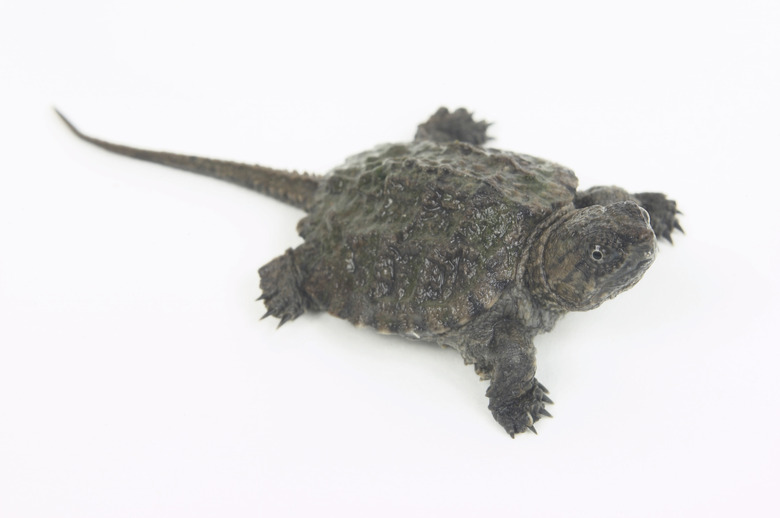How To Identify Tortoises
Perhaps you were driving down the road and stopped to help a small tortoise get safely across the street, only to decide at the last minute to keep it. Or maybe you are just trying to decide whether it is safe to pick it up to begin with.
There are a number of scenarios where tortoise species identification could prove beneficial. Learn how to get a good idea of what types of tortoise there are and the tortoise breeds you could encounter by comparing some basic characteristics.
Step 1
Check whether it has webbed feet. Most people use the terms "tortoise" and "turtle" interchangeably. Tortoise breeds are generally land animals, only going into ponds or creeks to drink.
Step 2
Look at the feet. Most types of tortoise have clawed front and rear feet to help them move better on land and to make burrows.
Freshwater turtles, such as snapping turtles and soft shell turtles, have webbed rear feet and clawed front feet.
Step 3
Inspect the beak.
If it has a squared, blunt beak, it is a tortoise species. If it has a sharp pointy beak, it is a snapping turtle. If it has a long, pig-like snout, it is a soft shell turtle. A hooked beak similar to a bird of prey will likely belong to a box turtle.
Step 4
Look at the tail. If the tail is long and has spikes, it is probably a snapping turtle. If the tail is short and stubby, it is more likely a land type of tortoise.
Step 5
Check out the shell. Tortoise species identification is often easiest by looking at the shell.
If it appears soft and flat, it is a soft shell turtle, which will bite. If it has a line of ridges running the length of the shell that look like spikes, it is probably a snapping turtle, which will also bite.
If the shell looks more like a helmet-shaped dome, it is likely a benign box or painted turtle. A black shell with yellow markings means a spotted turtle. A brown or gray shell with growth rings on each section of shell is a wood turtle.
Step 6
Check the markings. Turtles with red markings on the top or bottom of the shell as well as on the neck and legs are called painted turtles.
Turtles with yellow lines or stripes and no red markings are likely common map turtles. Turtles with red and orange markings near the eyes and yellowish stripes on the head and legs are red-eared sliders.
TL;DR (Too Long; Didn't Read)
Make tortoise species identification easy by comparing the tortoise with pictures of known tortoise breeds and species to be certain of the kind you have.
Warning
Snapping turtles and soft shell turtles are both types of tortoise that bite. Snapping turtles in particular have very powerful and painful bites, and a large snapping turtle can remove a finger if you are not careful.
Cite This Article
MLA
Garrison, Joel. "How To Identify Tortoises" sciencing.com, https://www.sciencing.com/identify-tortoises-8715677/. 7 May 2019.
APA
Garrison, Joel. (2019, May 7). How To Identify Tortoises. sciencing.com. Retrieved from https://www.sciencing.com/identify-tortoises-8715677/
Chicago
Garrison, Joel. How To Identify Tortoises last modified March 24, 2022. https://www.sciencing.com/identify-tortoises-8715677/
